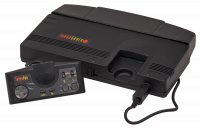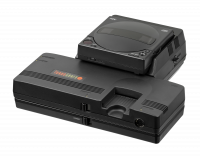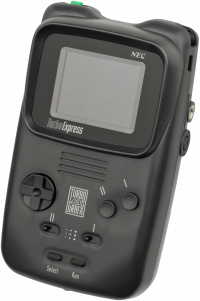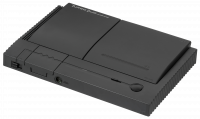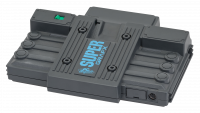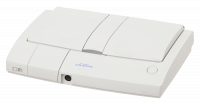TurboGrafx-16 Mods Wiki
No edit summary |
mNo edit summary |
||
| (8 intermediate revisions by the same user not shown) | |||
| Line 27: | Line 27: | ||
* [[Applying ROM Patches]] | * [[Applying ROM Patches]] | ||
* [[TG16:Accessory Compatibility]] | * [[TG16:Accessory Compatibility]] | ||
* | * [[TG16:Homebrew Games List]] | ||
* [https://github.com/Widdiful/PCE_BRAM_Manager Backup RAM Manager] | |||
</div></div></div> | </div></div></div> | ||
| Line 35: | Line 36: | ||
===Technical Information=== | ===Technical Information=== | ||
* [[Media:TurboGrafx-16-Service-Manual.pdf|TurboGrafx-16 Service Manual]] | * [[Media:TurboGrafx-16-Service-Manual.pdf|TurboGrafx-16 Service Manual]] | ||
* [[Media:Pc_engine_schematics.pdf|PC Engine Schematics]] | |||
* [[Media:Pc_engine_duo_schematics.pdf|PC Engine Duo Schematics]] | |||
* [[TG16:TurboGrafx-16 Model Differences|Model Differences]] | * [[TG16:TurboGrafx-16 Model Differences|Model Differences]] | ||
* <s> [[TG16:Video Output Notes]] </s> | * <s> [[TG16:Video Output Notes]] </s> | ||
| Line 64: | Line 67: | ||
* Internal RGB Mods: | * Internal RGB Mods: | ||
** [https://github.com/zaxour/TurboNanza TurboNanza (RGB)] | ** [https://github.com/zaxour/TurboNanza TurboNanza (RGB)] | ||
** | ** [https://voultar.com/index.php?route=product/product&path=59&product_id=53 Voultar's RGB Kit (RGB)] | ||
** | ** [https://etim.net.au/av-driver/ eTim's AV Driver (RGB)] | ||
** | ** [https://gamesx.com/rgbadd/rgbturbo.htm GameSX's RGB Mod (RGB)] | ||
* [[TG16:External RGB Mods]] | * [[TG16:External RGB Mods]] | ||
* <s> [[TG16:YPbPr Component Mod]]</s> | * <s> [[TG16:YPbPr Component Mod]]</s> | ||
| Line 109: | Line 112: | ||
<li> [[TG16:Super SD System 3]] (discontinued)</li> | <li> [[TG16:Super SD System 3]] (discontinued)</li> | ||
<li> [[TG16:Super HD System3 Pro]] </li> | <li> [[TG16:Super HD System3 Pro]] </li> | ||
<li> [[ | <li> [[:File:DIY_Flash_HuCard.zip|DIY Flash HuCard]] </li> | ||
</ul> | </ul> | ||
||<h3>3D Printables</h3> | ||<h3>3D Printables</h3> | ||
Latest revision as of 19:39, 4 February 2025


The PC Engine/TurboGrafx-16 is an 8-bit console from the fourth generation of video game consoles. Designed by Hudson Soft and manufactured and sold by electronics giant NEC, the console was initially released in Japan as the PC Engine on October 30th, 1987 and was released in North America (August 29th, 1989) as the TurboGrafx-16, followed by a limited European release as the TurboGrafx in 1990. The console used small credit card-sized cartridges known as HuCards and was also the first console to play games on optical media via a CD-ROM expansion, first released in 1988. It was also the first console to have a handheld variant — the TurboExpress — which could play the same games as the home consoles. At least 17 different model variations were released, with the most significant models being part of the TurboDuo (or PC Engine Duo) line which incorporates the CD-ROM² add-on directly into the hardware. Although it was a success in Japan, the console saw sluggish sales in North America and was discontinued there by 1993. NEC and Hudson would unsuccessfully follow up on the PC Engine with the 32-bit PC-FX in 1994, but the PC Engine continued to see releases in Japan until 1999.
Flash Carts |
3D Printables |
Replacement Parts |
Other |
